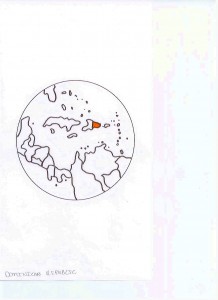DOMINICAN REPUBLIC
A. THE COUNTRY
The Dominican Republic is the eastern two-thirds of the island of
Hispaniola in the Caribbean (shared with Haiti). The government is a
representative democracy. Earlier European colonial powers and
Dominican governments have ruthlessly exploited the land and the people
– this can be seen in the massive gap between a small wealthy elite and
the poor majority. Tourism has replaced agricultural exports
(sugarcane, coffee, tobacco) as the primary revenue source, followed by
remittances from abroad.
B. THE PEOPLE
The population is ~10,226,000 and the official language Spanish.
~87.5% are Dominican (Mestizo, white, black), ~10.2% Haitian (most are
illegal and forced to work as manual labourers in unjust and harsh
conditions), ~2.3% Other (Spanish, U.S. citizen, Jamaican, Chinese).
C. RELIGIONS AND CHRISTIANITY/PENTECOSTALISM
Catholicism is unofficially the state religion based on a concordat with
the Vatican. The Catholic Church jealously guards its privileged
status. Many who are active Catholics practise a blend of Christianity
and Afro-Spiritism, influenced by Cuban santeria and Haitian voodoo.
Full freedom of religion in basic rights is afforded non-Catholics, but
they are often faced with bureaucratic antipathy and low-level
hostility. ~94.35% claim to be Christian, ~3.2% Non-religious, ~2.23%
Ethnoreligionist, ~0.11% Muslim,, ~0.08% Baha’i, ~0.02% Buddhist, ~0.01%
Jewish. In the Christian category:
~82.44% are Catholic, ~7.11% Protestant, ~1.93% Independent, ~1.42%
Unaffiliated, ~0.04% Anglican, ~1.75% are groups originating in Western
society that are considered ‘marginal’.
Evangelicals represent ~9.1% of the population.
Charismatics represent ~12.9% and of those ~4.5% are Pentecostals.
Donna Siemens
References:
http://en.wikipedia.org
Operation World, Jason Mandryk. Colorado Springs: Biblica Publishing, 2010.

